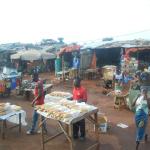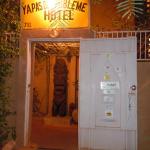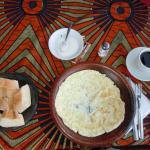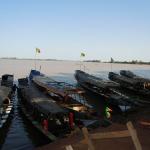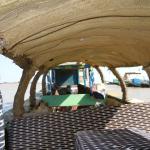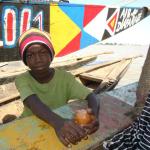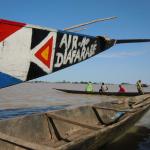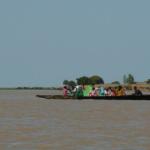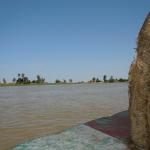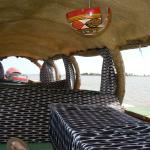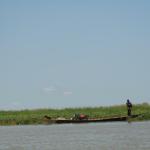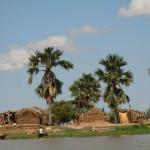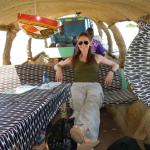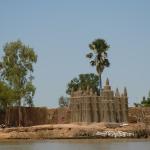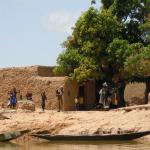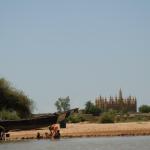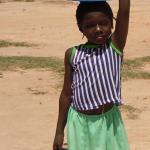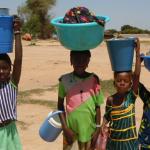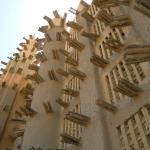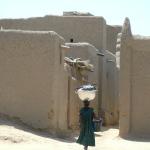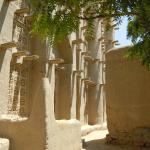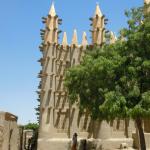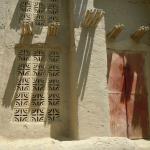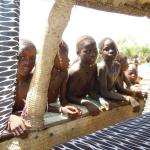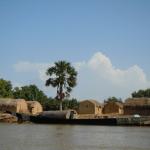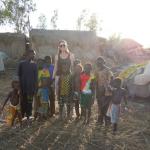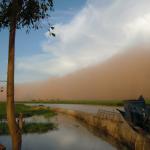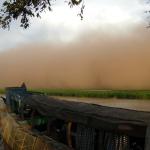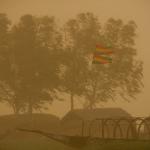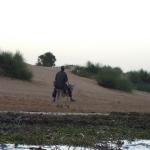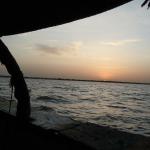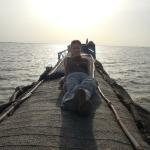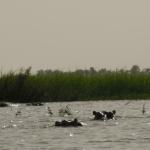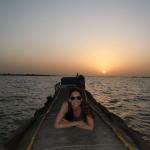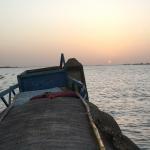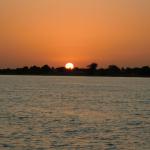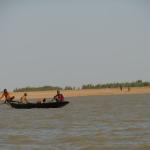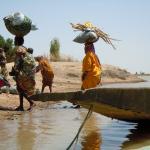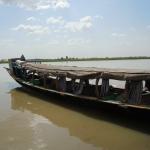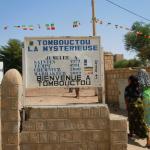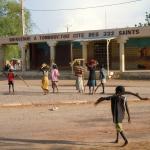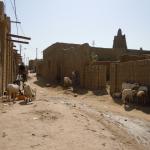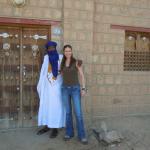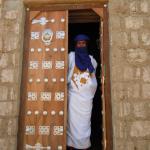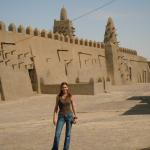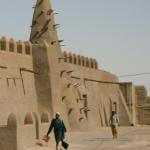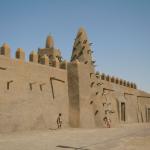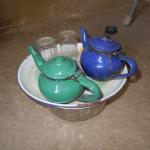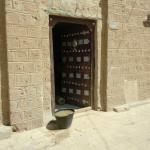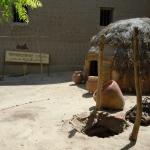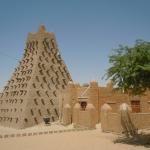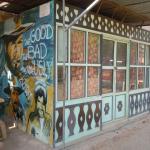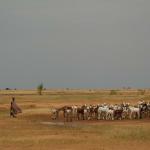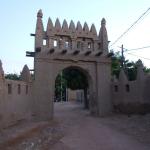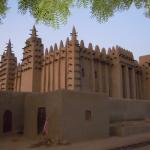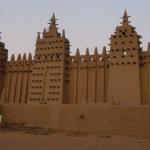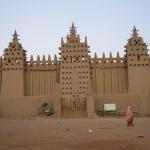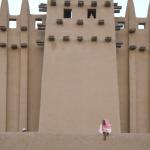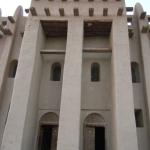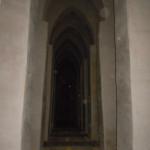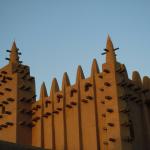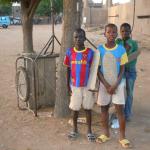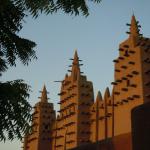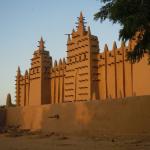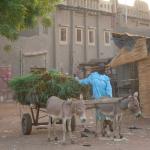© 2011 Sabrina Swenson. All Rights Reserved.
Mali
September, 2011
Click here to add text.
From here to Timbuktu! Although as a kid, I never actually realized Timbuktu was an actual place, in my studying of world maps as an adult, however, I came to realize it is very much a real destination.
Timbuktu; a dry dusty place which has the sense of residing at the ends-of-the-earth, is actually located in Mali, West Africa on the southern edge of the Sahara Desert. My trip began with my arrival into Bamako, the capital of Mali. With it's heavy population, trash strewn about the streets and not much in particular to marvel at, I made my time in Bamako short. I headed out into the far more interesting countryside the day after my arrival. My first destination was Mopti where you can hire a slow boat to float three days up the Niger River to Timbuktu. The journey from Bamako to Mopti was a hard 11 hour ride on a huge bus packed to the hilt. Every seat was filled on this monstrosity including numerous people in the isle sitting on a variety of bags, boxes and containers of water. It always strikes me how Africans never complain about being uncomfortable no matter how much they have to contort their bodies to be able to jam inside a vehicle. We made several stops on our way and at each one numerous sellers would come on the bus with their goods in hand hawking their items. I bought a small bag of Madeleine's (french sponge cake) that cost pennies and was every bit as good as any I've had in Paris. They were warm, buttery and apparently had just come out of the oven. People were also selling soda's, beads, trinkets and some were even singing looking for a few francs (the West African franc is the currency) in return. Mali is home to some beautiful music. People everywhere can be heard singing a mournful tune. Although it always sounded a bit sad it was actually quite beautiful. We eventually pulled into Mopti and I quickly found a guy on a motorbike to take me to my hotel for a much needed shower. I found a guide to organize a slow boat and the following day found myself on a beautiful long, narrow boat with a thatched roof, open sides and some gorgeous black and white curtains which flapped in the breeze. The curtains were attached on the top and bottom and could be moved right or left as needed to block the blazing sun. I set off from Mopti with a driver, cook and an English speaking guide. Early in the morning I would sit on top of the thatched roof before the sun became too strong and let the wind whip through my hair. I came down in time for breakfast which consisted of tasty coffee, bread (pita like in appearance) and marmalade made of mangos. Although it was extremely hot in Mali, as long as we were moving on the river we had natural air conditioning as the pleasant breeze flowed. We were on the river all day from early to late and at dusk we would dock along the edge of the Niger wherever we happened to be. I would then erect a small tent high on the sand dunes for my sleep. The guys slept on the boat and at first I thought they had the better deal. My tent, as it turned out, was clearly not meant for hot weather and with no ventilation hole to create an airflow I sweated profusely both nights and maybe only drifted off briefly. I would exit the tent in the morning to find it 20 degrees cooler outside! I learned the guys had it rough as well but not from the heat. Mosquitoes are rampant in Mali and each man was bitten up pretty badly. For three days and two nights I would watch the world go by on this beautiful boat. When I asked about the toilet facilities I was directed to the back of the boat. Really? There's a toilet on board? Yes, I was assured. You have to be fairly agile to get out of the boat and scale along the thin board along the sides all while hanging onto the top as the boat zoomed up the Niger. As I inched my way to the back I basically found a large wooden box with a door and open roof. I opened the door and there was just a home made squat toilet (basically just a hole in the floor of this wooden box). Needless to say it dropped straight into the Niger River. I made a mental note not to take a swim.
At one point my driver saw a dust storm approaching. I had not noticed it but once he pointed it out I saw an ever increasing orange cloud headed our way. We docked the boat and I got out to take a look around waiting for the dust to pass. We walked around the settlement that was much like the other villages along the Niger. We ventured around the mud homes and at one point I had a gaggle of children walking with me. Each one holding on to one of my fingers. We walked as a mass and they clung on dearly all the while jabbering and staring at me. My guide mentioned that since not many tourists were coming to Mali these days, they had not seen a foreigner in a long time. When I looked up to see what the dust cloud was doing I realized it had grown to at least a half a mile wide. At this point we bid everyone adieu and headed back to the boat. The captain closed the covering on the side of the coming cloud and we were suddenly hit with magnificent winds as the dust storm pummeled the boat. The sky was literally orange with dust. It only lasted a few minutes and once it had passed we were on our way. We waved goodbye to the kids and once again pointed the boat North East towards Timbuktu.
Along the way if we wanted fish for a meal, we would simply just find a fishing boat, pull up next to it and buy fish straight from the fisherman who had just plucked it out of the water. The chef was an excellent cook and every meal was delicious.
My slow boat ride ended on the afternoon of the third day at the port of Korioume which is only a few miles from Timbuktu. I hired a mototaxi (basically a motorcycle with half a truck bed attached to the back) to drive me the short distance to my destination. Upon arrival in Timbuktu as I walked to my hotel I was greeted with a sand storm of biblical proportions. A blinding kind of storm that stops you in your tracks. All I could do was stand still, put my hands over my eyes and wait for it to pass. This place certainly lives up to it's name as being in the middle of nowhere! After dropping my things at a hotel I found a guide to take me around including a stop at the well where Timbuktu got it's name. Timbuktu (Tombouctou in French) comes from two Songhay words Tom and Bouctou. Tom means "water well" and Bouctou was the name of the woman who owned the well. The well was a meeting point for tradesman traveling across the Sahara to sub-Saharan Africa. Additional, Timbuktu has three of the oldest mosques in West Africa, the oldest dating back to the 14th century. As such, it was fascinating to walk around. In Mali French is the official language although Bambara is most widely spoken.
After a few days of checking out this dusty town I secured a 4x4 vehicle for my return to Mopti. I set off with the vehicle full of people wanting to go in the same direction. I sat in the front seat and after crossing the river on a barge we were off on some of the worst roads I've ever seen. The driver seemed to be hell bent on making it to Mopti in record time. With balding tires we flew down the "road" which was actually more of a dusty path. Gigantic pot holes littered the path and the earth was actually a bright red/orange here. My driver, a man who looked like he had seen better days, seemed to get a kick out of terrorizing the occupants of the vehicle. After an hour or two the "road" finally became paved and a little more civilized driving commenced. I stayed in Mopti the night before continuing on to Djenne. I decided to grab a minibus for the 2 hour ride. I had on my backpack while I waited at the bus station and had changed from my travel shoes into my flip flops to be cooler for the ride. Since my backpack was full I just tied my shoes together and was holding them by the strings when a man came up to me. He gave my shoes a good looking over and I could tell exactly what he was thinking. Realizing that my size 9 brand spanking new travel shoes from REI were probably the same size that he wore he asked if I wanted to do some trading. He pulled out some beads that probably costs all of 30 cents and asked if I would be interested in swapping my shoes for the beads. I just smiled and said "sorry, I need them! "
Djenne is home to the largest mud-built structure in the world. It's huge mosque is in the classic Sudanese architecture. It's made of sun-baked mud bricks much like the mosques in Timbuktu but much larger. It stands as a huge backdrop to the going ons of the town of Djenne. It has wooden spars that jut out from the walls. This is not only an important part of the architecture but also serves as a ladder of sorts to help in the annual repair of the mud structure. Every year after the rainy season people volunteer to help repair the mosque. I spent a couple days in Djenne mostly marveling at the immense size of this structure.
I eventually made my way back to Bamako on another bus and on to the airport for my flight home. Although I enjoyed the sights of Mali, I must point out that currently there are very few tourists in the country and as such, I had touts forever following me and nagging me to use their services as a guide. Tourists are being dissuaded from going to Mali at this time as there have been reports of al-Qaeda in Timbuktu and points further North in the desert towards the Algerian boarder. I found myself only one of a hand full of tourists in the country. Having been to many a third world countries I'm used to being a bit badgered by touts but this was on a whole new level. Regardless, the boat ride on the Niger, Timbuktu and Djenne were all worth the trip and now I have been to Timbuktu.... and back!

